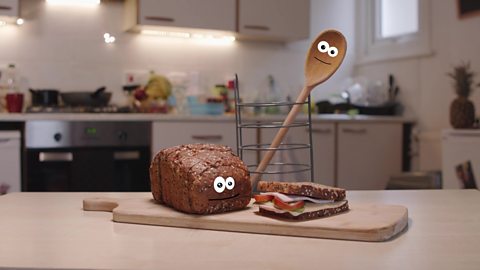Nutritional needs at different stages
Babies, children and teenagers have important nutritional needs to allow them to grow, develop and stay active. Find out more about why the food we need changes as we go through life.
In this article you can learn:
- what young people should eat at different life stages
- what weaning is
This resource is suitable for Health and Wellbeing for primary school learners.
Video - Food at different stages
In this video, we visit a family kitchen to find out how different foods can provide nutrition to young people at different stages in their development.
ROOSTER CROWS AND ALARM SOUNDS
THE GREAT SPOON Attention food! It is 7 a.m. also known as breakfast time! The family will be here any moment now. Are we assembled and ready?
ALL FOOD Yes, sir!
THE GREAT SPOON Protein?
EGG Yes, sir.
THE GREAT SPOON Carbohydrates?
BREAD Yes, sir.
THE GREAT SPOON Fat?
PEANUT BUTTER Yes, sir.
THE GREAT SPOON Fibre?
CEREAL Yes, sir.
THE GREAT SPOON Vitamins?
ALL FOOD Yes, sir!
THE GREAT SPOON Minerals?
ALL FOOD Yes, sir!
THE GREAT SPOON Water?
WATER Come on! Let's do this! Woo-hoo!
THE GREAT SPOON Baby incoming.
BABY FOOD GRUNTS
BABY FOOD Baby Food, reporting for duty! Already being devoured.
THE GREAT SPOON Good job!
BABY FOOD The baby has no teeth and I provide the sloppy nutrients. You wouldn’t know to look at me but this mush is actually pears, strawberries, rice and yoghurt all blended up. Proud to be of service, sir.
THE GREAT SPOON Milk and Cereal, it’s your time. Are you clear on your job?
MILK AND CEREAL Yes, sir.
MILK To provide the 4 year old with calcium and vitamin D at breakfast time, sir! To help them grow big and strong, sir!
THE GREAT SPOON Correct. And Cereal?
CEREAL To provide folic acid, iron and fibre, sir! Helping digestion and making sure hair, skin and nails are healthy and strong, sir.
THE GREAT SPOON Proceed to be eaten.
CEREAL Yes, sir.
THE GREAT SPOON Water - you’re going to be very busy today - children need to drink six to eight glasses of water a day. This is your first shift.
WATER Woohoo!
THE GREAT SPOON Now, who will make sure the teenager is well fed until lunchtime?
EGG Us, sir.
BREAD And me.
PEANUT BUTTER And me.
BANANA And me.
THE GREAT SPOON Okay. Eggs, we will boil you - you’re full of protein and proteins are just what teenage bodies need when they’re growing fast.
Bread. We will toast you - packed with energy for the Teenager.
Peanut butter, you will be spread on the toast - you’re giving the teenager her magnesium and vitamin B-6, making sure she won’t get poorly.
And banana, the teenager will eat you on the walk to the bus stop - you’re providing vitamin C and potassium - important for a healthy heart. Is that clear?
ALL FOOD Yes, sir!
THE GREAT SPOON Good luck team! Water - prepare to be drunk.
WATER Honestly - best day ever!
THE GREAT SPOON Another meal time organised to perfection. Now I can rest.
CHILD Muuuuuuuum! What’s for lunch?
THE GREAT SPOON GULPS
Food at different life stages
At each stage of our life we have nutritional needs.
Food for babies (0-2 years old)
- Babies need milk when they are first born. They may get this from breastfeeding or bottle-feeding.
Weaning - When do babies start eating solid foods?
- They slowly learn how to eat solids from six months old. This is called weaning The process of gradually introducing a baby to solid foods..
- Weaning involves giving babies food that has been blended to a smooth consistency, as they do not yet have teeth to chew with. For example mashed banana or avocado are easy for babies to eat.
- Babies should be given a wide variety of food, this way they learn lots of different tastes.
- They should only eat a very tiny amount of salt as their kidneys cannot cope with salt yet.
Food for children (3-12 years old)
- Children now have a full set of teeth and should be eating a wide variety of foods.
- They need carbohydrates for energy and foods that are low in salt and sugar but packed full of nutrients and vitamins.
- Children need to drink plenty of water every day as it is vital to keep our bodies working properly.
Food for teenagers (13-19 years old)
- Teenagers need to eat a well-balanced diet.
- A teenager's body is preparing to become an adult. They need to give their body good fuel for all that growing and changing.
- It's important for teenagers to get into healthy eating habits that they can carry through their adult lives.
- Meals should include foods from all five food groups. Teenagers should aim for health targets such as at least five portions of different fruit and vegetables a day.
- Teenagers need to drink six to eight glasses of water a day.
At all stages of our growth we need food that contains lots of nutrients and energy.
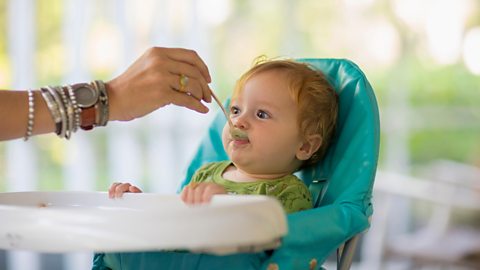
Image caption, Babies (0-2 years old)
Babies need milk when they are first born. They slowly learn how to eat solids from six months old. This is called weaning.
Image caption, Children (3-12 years old)
Children have a full set of teeth and should be eating a wide variety of foods. They should also drink plenty of water every day.
Image caption, Teenagers (13-19 years old)
Teenagers need to eat a well-balanced diet, which will help them get into good habits.
1 of 3
What we get from food
During all life stages we are growing, so we need to eat a healthy varied diet that is rich in nutrients and energy. Some examples of nutrient rich foods are bananas, fish and brown rice.
However, there are stages of our development when we may need more of a particular vitamin or nutrient. Also, the amount of food we need to eat increases steadily as we change and grow from babies to teenagers.
Here are some examples of nutritional requirements at each life stage:
Babies
- Meat, fish, beans and eggs are protein-rich foods which help build healthy bones and tissue as babies begin to move, crawl and eventually walk.
- Fruit and vegetables provide lots of vitamins like vitamin A and vitamin C to help babies fight off germs. Vitamin A is good for skin and eyes. Vitamin C helps you absorb iron from other foods.
Children
- Dairy foods like milk, cheese and yoghurt contain calcium which helps bones grow strong and healthy.
- Brown bread, some cereals and vegetables are full of fibre which helps us digest food.
Teenagers
- Foods rich in potassium such as spinach and sweet potatoes are great for a healthy heart and blood pressure.
- Nuts and avocados are full of magnesium which helps with growing pains. This is very useful at this life stage as it has rapid growth spurtWhen our body grows quickly..

Food and health vocabulary
Here is a list of key words to use when you are talking about food and health.
- Sorry, something went wrongCheck your connection, refresh the page and try again. – Breaking down food in our bodies so that we can absorb its nutrients.
- Sorry, something went wrongCheck your connection, refresh the page and try again. – What we eat and drink.
- Sorry, something went wrongCheck your connection, refresh the page and try again. – The contents of food and how it affects our bodies.
- Sorry, something went wrongCheck your connection, refresh the page and try again. – Food which build healthy muscles and allow our bodies to grow and repair. This includes fish, meat, beans, pulses and eggs.
- Sorry, something went wrongCheck your connection, refresh the page and try again. – Food which keeps our energy levels up like rice, bread, pasta and potatoes.
- Sorry, something went wrongCheck your connection, refresh the page and try again. – Food which acts as an energy store such as butter, margarine and olive oil.
- Sorry, something went wrongCheck your connection, refresh the page and try again. – Food which are good for our digestion (food passing through the stomach), like wholegrain bread and pasta.
- Sorry, something went wrongCheck your connection, refresh the page and try again. – These can be found in a wide variety of foods. They help all areas of body work correctly and stay healthy. Potassium, magnesium and calcium are all examples of minerals. A, C, D and B6 are all examples of vitamins.
- Sorry, something went wrongCheck your connection, refresh the page and try again. – Any food that is smooth and easily eaten by babies.
- Sorry, something went wrongCheck your connection, refresh the page and try again. – The process of gradually introducing a baby to solid foods.
- Sorry, something went wrongCheck your connection, refresh the page and try again. – Protects our body from illness.
More to learn
Test your knowledge of food at different stages
Quiz - Food at different stages
Challenge - Mind map
- Choose a life stage from babies, children or teenagers.
- Create a mind map that includes everything you have learned about the nutritional needs for that stage.
More on Food and health
Find out more by working through a topic
- count6 of 10
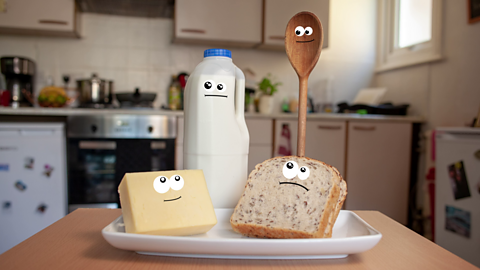
- count7 of 10
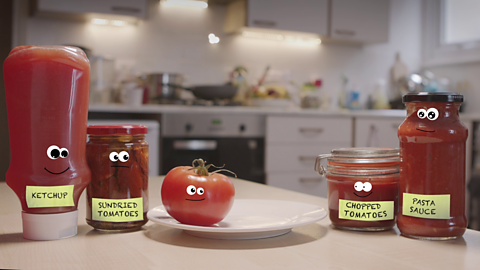
- count8 of 10
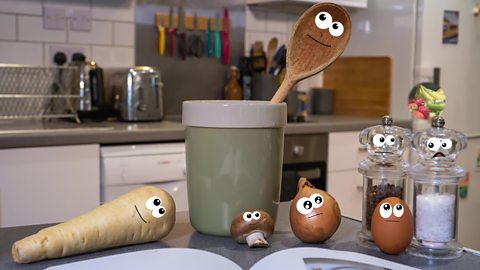
- count9 of 10
